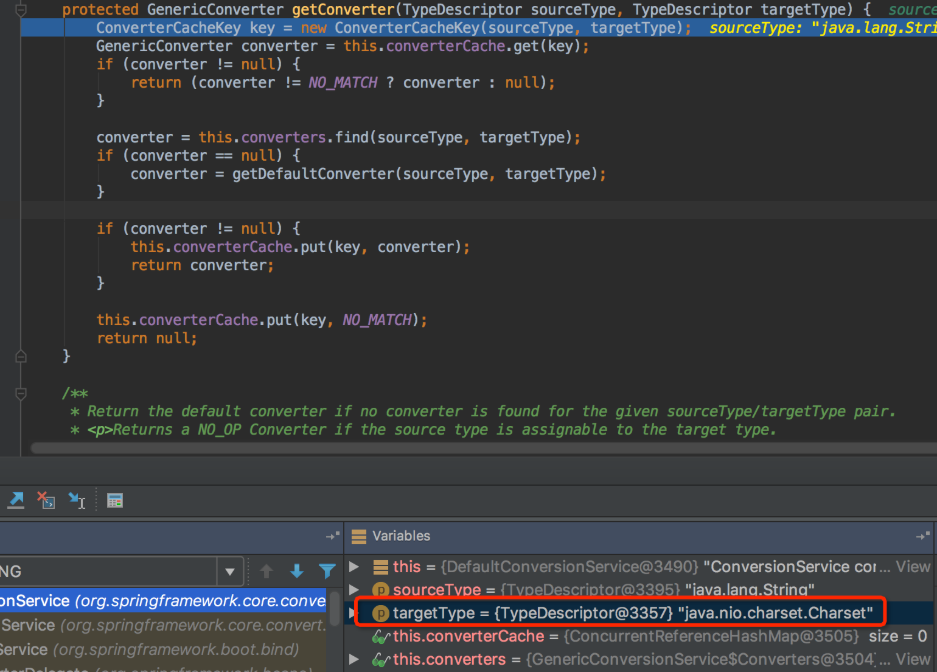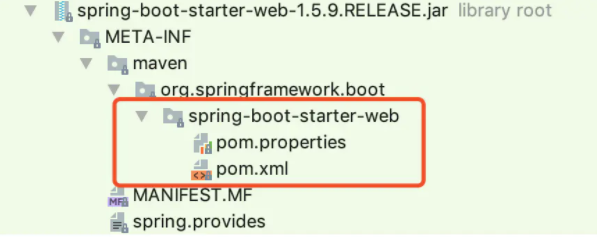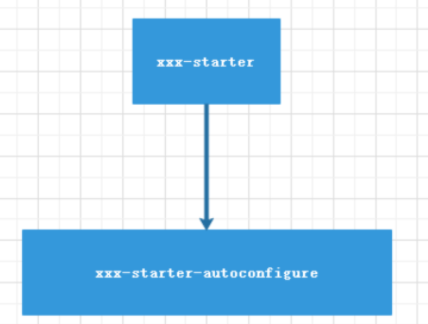Spring中纷繁复杂的配置文件一直让广大开发人员颇有微词,但是随着业务的复杂度越来越高,这也是在所难免的事情。
Spring Boot实现自动配置的基础 引子 问题是什么 Spring中纷繁复杂的配置文件一直让广大开发人员颇有微词,但是随着业务的复杂度越来越高,这也是在所难免的事情。
哪怕是要创建一个简单的Web应用,需要配置的东西也是一坨坨的,这个过程虽然不复杂但是很繁琐,而且非常容易出错。所以聪明的开发人员想出了很多办法来解决这个问题,比如Maven的Archetype创建,又或者各个公司内部的脚手架小工具。但是这些方案总是有这样那样的问题,比如维护不方便,不好定制等等。
在云计算,弹性计算以及微服务越来越普及的今天,急需要一种自动配置的方式,从而方便地按需部署。所以Spring Boot应用而生,而自动配置作为Spring Boot的闪光点之一,自然非常受人关注。
Spring Boot的自动配置功能,其实从本质上说并没有引入什么新功能,它只是将Spring现存的能力做了一次组合和封装。那么在深入了解Spring Boot的自动配置原理之前,可以先了解一下Spring的这些已知能力,打下良好地基础。
和配置相关的Spring已有能力 @Profile 很多时候,我们开发的Spring应用,需要根据所在环境的不同注册相应的Bean到上下文中。
比如本地开发环境中,数据库连接对象往往指向的是开发数据库;在测试环境中,又会指向测试数据库;而到了线上,指向的自然是生产数据库。
为了满足这个常见需求,Spring 3.1中引入了Profile的概念。比如在下面的代码中,配置类会根据所在环境(Profile)的不同,向上下文中注入对应的Bean实例。
1 2 3 4 5 6 7 8 9 10 11 12 13 14 15 16 17 18 19 20 21 @Configuration public class DataSourceConfiguration @Bean @Profile("DEV") public DataSource devDataSource () } @Bean @Profile("TEST") public DataSource testDataSource () } @Bean @Profile("PROD") public DataSource prodDataSource () } }
那么,如何声明应用所处的Profile呢?还是有几种选择:
配置文件,比如在application.properties中声明spring.profiles.active=DEV
启动参数,比如-Dspring.profiles.active=DEV
这个Profile的概念很直观,但是由于它仅仅是依赖一个字符串的值作出决策,所以不够灵活和强大。因此就有了下面@Conditional注解和Condition接口的诞生。
@Conditional以及Condition接口 它们是Spring 4中引入的新功能。
Condition接口和@Conditional接口通常会一起配合使用。
Condition接口的定义如下:
1 2 3 4 5 6 7 8 9 10 public interface Condition boolean matches (ConditionContext context, AnnotatedTypeMetadata metadata) }
下面是一个该接口的实现类:
1 2 3 4 5 6 7 public class CustomCondition implements Condition @Override public boolean matches (ConditionContext context, AnnotatedTypeMetadata metadata) return true ; } }
@Conditional注解的定义如下:
1 2 3 4 5 6 7 8 9 10 11 @Target({ElementType.TYPE, ElementType.METHOD}) @Retention(RetentionPolicy.RUNTIME) @Documented public @interface Conditional { Class<? extends Condition>[] value(); }
然后一般在Java Config类中将它们结合在一起使用:
1 2 3 4 5 6 7 8 9 @Configuration public class CustomConfiguration @Bean @Conditional(CustomCondition.class) public CustomClass customClass () return new CustomClass(); } }
因此通过将@Conditional注解和Condition接口的能力进行结合,就可以实现根据外界条件来决定一个Bean是不是应该被加载到Spring上下文中。对比一下@Profile注解,可以发现这种方式提供了更高的灵活度。
在@Profile注解中,唯一决定是否加载一个Bean的是一个字符串,即所在环境的标识符例如DEV,TEST,PRODUCTION这类。但是在@Conditional的方案中,决定是否加载的逻辑被抽象到了Condition接口中,这样能够做的判断就非常多了。
@ConfigurationProperties以及@EnableConfigurationProperties 要实现自动配置,还有一个比较关键的环节。我们都知道Bean之所以有意义是因为每个Bean中都有自己独特的字段,而很多情况下,Bean中的字段都是可配置的。因此,要实现自动配置,我们首先需要对一些关键字段给予一个默认值,当然也需要提供一个机制让用户能够对这些字段进行覆盖。在Spring Boot中,提供了一个新的机制叫做Configuration Properties(可配置的属性),它有几个特点:
类型安全的配置方式(基于Java类),基于Spring Conversion API完成类型转换
可以通过配置文件,启动参数等多种方式完成覆盖
和JavaConfig类无缝集成
这个机制有两个关键的注解类型,即@ConfigurationProperties和@EnableConfigurationProperties。下面我们就来看看它们的定义以及如何应用:
定义方式 @ConfigurationProperties
1 2 3 4 5 6 7 8 9 10 11 12 13 @Target({ ElementType.TYPE, ElementType.METHOD }) @Retention(RetentionPolicy.RUNTIME) @Documented public @interface ConfigurationProperties { @AliasFor("prefix") String value () default "" ; @AliasFor("value") String prefix () default "" ; }
只捡主要的属性介绍,这个注解中比较关键的就是value/prefix属性。这两个属性是一个意思,互相设置了@AliasFor。
@EnableConfigurationProperties
1 2 3 4 5 6 7 8 9 10 11 12 13 14 15 @Target(ElementType.TYPE) @Retention(RetentionPolicy.RUNTIME) @Documented @Import(EnableConfigurationPropertiesImportSelector.class) public @interface EnableConfigurationProperties { Class<?>[] value() default {}; }
应用方式 以Spring Web应用中需要的HttpEncodingFilter这个Filter的自动配置为例,看看如何应用这两注解:
1 2 3 4 5 6 7 8 9 10 11 12 @ConfigurationProperties(prefix = "spring.http.encoding") public class HttpEncodingProperties public static final Charset DEFAULT_CHARSET = Charset.forName("UTF-8" ); private Charset charset = DEFAULT_CHARSET; private Boolean force; }
这是一个配置类,它设置了前缀spring.http.encoding。因此,这个配置类中的字段都会对应某一个具体的配置KEY,比如charset字段对应的配置KEY为spring.http.encoding.charse; force字段对应的是spring.http.encoding.force。同时可以给每个字段设置一个默认值,比如上述的charset字段就有一个默认值DEFAULT_CHARSET,对应的是UTF-8的字符集。
如果我们不想用默认的UTF-8编码方式,想换成GBK,那么在配置文件(如application.properties中),可以进行如下覆盖:
1 spring.http.encoding.charset=GBK1
这里有个地方值得一提,在配置文件中的GBK明明是字符串类型的值,而在对应的配置属性类这个属性是Charset类型的,那么肯定是有一个步骤完成了从字符串到Charset类型的转换工作。完成这个步骤的就是Spring框架中的Conversion API。这里只贴一张相关的图,不进行深入分析,感兴趣的同学可以在配置属性类的setCharset方法上打个断点然后深挖一下。
从这张图可以看出,Spring Conversion API中维护了一系列Converters,它实际上是一个从源类型到目标类型的Map对象。从String类型到Charset类型的Converter也被注册到了这个Map对象中。因此,当发现配置文件中的值类型和配置Java类中的字段类型不匹配时,就会去尝试从这个Map中找到相应的Converter,然后进行转换。
自定义注解实现自动配置 下面我们尝试来创建一个自定义的注解,实现Bean的按需加载。假设我们要创建的注解名为@DatabaseType。
具体的需求是:当启动参数中的dbType=MYSQL的时候,创建一个数据源为MySQL的UserDAO对象;当启动参数中的dbType=ORACLE的时候,创建一个数据源为Oracle的UserDAO对象。
最终配置类的代码可以是这样的:
1 2 3 4 5 6 7 8 9 10 11 12 13 14 15 @Configuration public class DatabaseConfiguration @Bean @DatabaseType("MYSQL") public UserDAO mysqlUserDAO () return new MySQLUserDAO(); } @Bean @DatabaseType("ORACLE") public UserDAO oracleUserDAO () return new OracleUserDAO(); } }
可以知道,@DatabaseType这个注解能够接受一个字符串作为参数。然后将该参数和启动参数中的dbType值进行比对,如果相等的话,就会进行对应Bean的注入工作。@DatabaseType的实现如下:
1 2 3 4 5 6 @Target({ ElementType.TYPE, ElementType.METHOD }) @Retention(RetentionPolicy.RUNTIME) @Conditional(DatabaseTypeCondition.class) public @interface DatabaseType { String value () ; }
其中比较重要的是@Conditional(DatabaseTypeCondition.class),表明它的觉得实际上也是委托给了DatabaseTypeCondition这个类:
1 2 3 4 5 6 7 8 9 10 public class DatabaseTypeCondition implements Condition @Override public boolean matches (ConditionContext conditionContext, AnnotatedTypeMetadata metadata) Map<String, Object> attributes = metadata.getAnnotationAttributes(DatabaseType.class.getName()); String type = (String) attributes.get("value" ); String enabledDBType = System.getProperty("dbType" , "MYSQL" ); return (enabledDBType != null && type != null && enabledDBType.equalsIgnoreCase(type)); } }
通过matches方法的第二个参数AnnotatedTypeMetadata,可以得到指定注解类型的所有属性,本例中就是@DatabaseType这个注解。然后将注解中的value值和启动参数dbType(不存在时使用MYSQL作为默认值)进行比对,然后返回相应的值来决定是否需要注入Bean。
所以,通过这个例子我们也可以发现。通常而言为了程序的可读性,可以将@Conditional和Condition接口的实现类给封装到一个业务含义更加明确的注解类型中,比如上面的@DatabaseType类型。它的意义就很明确,当类型是MySQL的该如何如何,当类型为Oracle的时候又当如何如何。
在后面深究Spring Boot的自动配置机制时,可以发现它也在@Conditional和Condition接口的基础上,定义了很多相关类型,用于更好地定义自动配置行为。
总结 本文介绍了Spring中和自动配置相关的两个概念:
@Profile
@Conditional以及Condition接口
SpringBoot的自动配置原理 原理 自动配置流程图
https://www.processon.com/view/link/5fc0abf67d9c082f447ce49b
先从启动类开始入手:
@SpringBootApplication: Spring Boot应用标注在某个类上说明这个类是SpringBoot的主配置类,SpringBoot
需要运行这个类的main方法来启动SpringBoot应用;
SpringBootApplication 1 2 3 4 5 6 7 8 9 10 @Target(ElementType.TYPE) @Retention(RetentionPolicy.RUNTIME) @Documented @Inherited @SpringBootConfiguration @EnableAutoConfiguration @ComponentScan(excludeFilters = { @Filter(type = FilterType.CUSTOM, classes = TypeExcludeFilter.class), @Filter(type = FilterType.CUSTOM, classes = AutoConfigurationExcludeFilter.class) }) public @interface SpringBootApplication {
注解说明:
@SpringBootConfiguration**:Spring Boot的配置类;**
标注在某个类上,表示这是一个Spring Boot的配置类;
@Configuration:配置类上来标注这个注解;
配置类 —– 配置文件;配置类也是容器中的一个组件;@Component
@EnableAutoConfiguration:开启自动配置功能;
以前我们需要配置的东西,Spring Boot帮我们自动配置;@EnableAutoConfiguration告诉SpringBoot开启自动配置,会帮我们自动去加载 自动配置类
@ComponentScan : 扫描包
相当于在spring.xml 配置中 但是并没有指定basepackage,如果没有指定spring底层会自动扫描当前配置类所有在的包
TypeExcludeFilter
springboot对外提供的扩展类, 可以供我们去按照我们的方式进行排除
AutoConfigurationExcludeFilter
@EnableAutoConfiguration 这个注解里面,最主要的就是@EnableAutoConfiguration,这么直白的名字,一看就知道它要开启自动配置,SpringBoot要开始骚了,于是默默进去@EnableAutoConfiguration的源码。
1 2 3 4 5 6 7 @Target(ElementType.TYPE) @Retention(RetentionPolicy.RUNTIME) @Documented @Inherited @AutoConfigurationPackage @Import(AutoConfigurationImportSelector.class) public @interface EnableAutoConfiguration {
@AutoConfigurationPackage
将当前配置类所在包保存在BasePackages的Bean中。供Spring内部使用
@AutoConfigurationPackage 1 2 @Import(AutoConfigurationPackages.Registrar.class) // 保存扫描路径, 提供给spring-data-jpa 需要扫描 @Entity public @interface AutoConfigurationPackage {
@Import(** AutoConfigurationImportSelector**.class) 可以看到,在@EnableAutoConfiguration注解内使用到了@import注解来完成导入配置的功能,而AutoConfigurationImportSelector实现了DeferredImportSelectorSpring内部在解析@Import注解时会调用getAutoConfigurationEntry方法,这块属于Spring的源码,有点复杂,我们先不管它是怎么调用的。 下面是2.3.5.RELEASE实现源码:
getAutoConfigurationEntry方法进行扫描具有META-INF/spring.factories文件的jar包。
1 2 3 4 5 6 7 8 9 10 11 12 13 14 15 16 17 18 19 20 21 22 23 protected AutoConfigurationEntry getAutoConfigurationEntry(AnnotationMetadata annotationMetadata) { if (!isEnabled(annotationMetadata)) { return EMPTY_ENTRY; } AnnotationAttributes attributes = getAttributes(annotationMetadata); // 从META-INF/spring.factories中获得候选的自动配置类 List<String> configurations = getCandidateConfigurations(annotationMetadata, attributes); // 排重 configurations = removeDuplicates(configurations); //根据EnableAutoConfiguration注解中属性,获取不需要自动装配的类名单 Set<String> exclusions = getExclusions(annotationMetadata, attributes); // 根据:@EnableAutoConfiguration.exclude // @EnableAutoConfiguration.excludeName // spring.autoconfigure.exclude 进行排除 checkExcludedClasses(configurations, exclusions); // exclusions 也排除 configurations.removeAll(exclusions); // 通过读取spring.factories 中的OnBeanCondition\OnClassCondition\OnWebApplicationCondition进行过滤 configurations = getConfigurationClassFilter().filter(configurations); // 这个方法是调用实现了AutoConfigurationImportListener 的bean.. 分别把候选的配置名单,和排除的配置名单传进去做扩展 fireAutoConfigurationImportEvents(configurations, exclusions); return new AutoConfigurationEntry(configurations, exclusions); }
任何一个springboot应用,都会引入spring-boot-autoconfigure,而spring.factories文件就在该包下面。spring.factories文件是Key=Value形式,多个Value时使用,隔开,该文件中定义了关于初始化,监听器等信息,而真正使自动配置生效的key是org.springframework.boot.autoconfigure.EnableAutoConfiguration,如下所示:
等同于
@Import({
1 # Auto Configure org.springframework.boot.autoconfigure.EnableAutoConfiguration=\ org.springframework.boot.autoconfigure.admin.SpringApplicationAdminJmxAutoConfiguration,\ ...省略 org.springframework.boot.autoconfigure.websocket.WebSocketMessagingAutoConfiguration,\ org.springframework.boot.autoconfigure.webservices.WebServicesAutoConfiguration
})
每一个这样的 xxxAutoConfiguration类都是容器中的一个组件,都加入到容器中;用他们来做自动配置;
后续: @EnableAutoConfiguration注解通过@SpringBootApplication被间接的标记在了Spring Boot的启动类上。在SpringApplication.run(…)的内部就会执行selectImports()方法,找到所有JavaConfig自动配置类的全限定名对应的class,然后将所有自动配置类加载到Spring容器中
以HttpEncodingAutoConfiguration(Http编码自动配置)为例解释自动配置原理;
1 2 3 4 5 6 7 8 9 10 11 12 13 14 15 16 17 18 19 20 21 22 @Configuration(proxyBeanMethods = false) @EnableConfigurationProperties(ServerProperties.class) @ConditionalOnWebApplication(type = ConditionalOnWebApplication.Type.SERVLET) @ConditionalOnClass(CharacterEncodingFilter.class) @ConditionalOnProperty(prefix = "server.servlet.encoding", value = "enabled", matchIfMissing = true) public class HttpEncodingAutoConfiguration { private final Encoding properties; public HttpEncodingAutoConfiguration(ServerProperties properties) { this.properties = properties.getServlet().getEncoding(); } @Bean @ConditionalOnMissingBean public CharacterEncodingFilter characterEncodingFilter() { CharacterEncodingFilter filter = new OrderedCharacterEncodingFilter(); filter.setEncoding(this.properties.getCharset().name()); filter.setForceRequestEncoding(this.properties.shouldForce(Encoding.Type.REQUEST)); filter.setForceResponseEncoding(this.properties.shouldForce(Encoding.Type.RESPONSE)); return filter; }
@Configuration(proxyBeanMethods = false)
标记了@Configuration Spring底层会给配置创建cglib动态代理。 作用:就是防止每次调用本类的Bean方法而重新创建对象,Bean是默认单例的
@EnableConfigurationProperties(ServerProperties.class)
@xxxConditional 根据当前不同的条件判断,决定这个配置类是否生效?
@Conditional派生注解(Spring注解版原生的@Conditional作用)
作用:必须是@Conditional指定的条件成立,才给容器中添加组件,配置配里面的所有内容才生效;
@Conditional扩展注解作用
(判断是否满足当前指定条件)
@ConditionalOnJava
系统的java版本是否符合要求
@ConditionalOnBean
容器中存在指定Bean;
@ConditionalOnMissingBean
容器中不存在指定Bean;
@ConditionalOnExpression
满足SpEL表达式指定
@ConditionalOnClass
系统中有指定的类
@ConditionalOnMissingClass
系统中没有指定的类
@ConditionalOnSingleCandidate
容器中只有一个指定的Bean,或者这个Bean是首选Bean
@ConditionalOnProperty
系统中指定的属性是否有指定的值
@ConditionalOnResource
类路径下是否存在指定资源文件
@ConditionalOnWebApplication
当前是web环境
@ConditionalOnNotWebApplication
当前不是web环境
@ConditionalOnJndi
JNDI存在指定项
我们怎么知道哪些自动配置类生效;
我们可以通过设置配置文件中:启用 debug=true属性;来让控制台打印自动配置报告,这样我们就可以很方便的知道哪些自动配置类生效;
1 2 3 4 5 6 7 8 9 10 11 12 ============================ CONDITIONS EVALUATION REPORT ============================ Positive matches:---**表示自动配置类启用的** ----------------- ...省略... Negative matches:---**没有匹配成功的自动配置类** ----------------- ...省略...
下面我么就以HttpEncodingAutoConfiguration(Http编码自动配置) 为例说明自动配置原理;
该注解如下:
1 2 3 4 5 6 @Configuration( proxyBeanMethods = false) @EnableConfigurationProperties({ServerProperties.class}) @ConditionalOnWebApplication( type = Type.SERVLET) @ConditionalOnClass({CharacterEncodingFilter.class}) @ConditionalOnProperty( prefix = "server.servlet.encoding", value = {"enabled"}, matchIfMissing = true) public class HttpEncodingAutoConfiguration {
@Configuration:表示这是一个配置类,以前编写的配置文件一样,也可以给容器中添加组件。
@ConditionalOnWebApplication:Spring底层@Conditional注解(Spring注解版),根据不同的条件,如果满足指定的条件,整个配置类里面的配置就会生效; 判断当前应用是否是web应用,如果是,当前配置类生效。
@ConditionalOnClass:判断当前项目有没有这个类CharacterEncodingFilter;SpringMVC中进行乱码解决的过滤器。
@ConditionalOnProperty:判断配置文件中是否存在某个配置 spring.http.encoding.enabled;如果不存在,判断也是成立的
即使我们配置文件中不配置pring.http.encoding.enabled=true,也是默认生效的。
@EnableConfigurationProperties({ServerProperties.class}):将配置文件中对应的值和 ServerProperties绑定起来;并把 ServerProperties加入到 IOC 容器中。并注册 ConfigurationPropertiesBindingPostProcessor用于将@ConfigurationProperties的类和配置进行绑定
所以只有知道了自动配置的原理及源码 才能灵活的配置SpringBoot
自定义starter 简介 SpringBoot 最强大的功能就是把我们常用的场景抽取成了一个个starter(场景启动器),我们通过引入springboot 为我提供的这些场景启动器,我们再进行少量的配置就能使用相应的功能。即使是这样,springboot也不能囊括我们所有的使用场景,往往我们需要自定义starter,来简化我们对springboot的使用。
如何自定义starter 我们参照@WebMvcAutoConfiguration为例,我们看看们需要准备哪些东西,下面是WebMvcAutoConfiguration的部分代码:
1 2 3 4 5 6 7 8 9 10 11 12 13 14 15 16 17 18 19 20 21 22 @Configuration @ConditionalOnWebApplication @ConditionalOnClass({Servlet.class, DispatcherServlet.class, WebMvcConfigurerAdapter.class}) @ConditionalOnMissingBean({WebMvcConfigurationSupport.class}) @AutoConfigureOrder(-2147483638) @AutoConfigureAfter({DispatcherServletAutoConfiguration.class, ValidationAutoConfiguration.class}) public class WebMvcAutoConfiguration { @Import({WebMvcAutoConfiguration.EnableWebMvcConfiguration.class}) @EnableConfigurationProperties({WebMvcProperties.class, ResourceProperties.class}) public static class WebMvcAutoConfigurationAdapter extends WebMvcConfigurerAdapter { @Bean @ConditionalOnBean({View.class}) @ConditionalOnMissingBean public BeanNameViewResolver beanNameViewResolver() { BeanNameViewResolver resolver = new BeanNameViewResolver(); resolver.setOrder(2147483637); return resolver; } } }
我们可以抽取到我们自定义starter时同样需要的一些配置。
1 2 3 4 5 6 7 8 9 10 11 @Configuration //指定这个类是一个配置类 @ConditionalOnXXX //指定条件成立的情况下自动配置类生效 @AutoConfigureOrder //指定自动配置类的顺序 @Bean //向容器中添加组件 @ConfigurationProperties //结合相关xxxProperties来绑定相关的配置 @EnableConfigurationProperties //让xxxProperties生效加入到容器中 自动配置类要能加载需要将自动配置类,配置在META-INF/spring.factories中 org.springframework.boot.autoconfigure.EnableAutoConfiguration=\ org.springframework.boot.autoconfigure.admin.SpringApplicationAdminJmxAutoConfiguration,\ org.springframework.boot.autoconfigure.aop.AopAutoConfiguration,\
模式:
我们参照 spring-boot-starter 我们发现其中没有代码:
我们在看它的pom中的依赖中有个 spring-boot-starter
我们再看看 spring-boot-starter 有个 spring-boot-autoconfigure
1 2 3 4 <dependency> <groupId>org.springframework.boot</groupId> <artifactId>spring-boot-starter</artifactId> </dependency>
我们再看看 spring-boot-starter 有个 spring-boot-autoconfigure
1 2 3 4 <dependency> <groupId>org.springframework.boot</groupId> <artifactId>spring-boot-autoconfigure</artifactId> </dependency>
关于web的一些自动配置都写在了这里 ,所以我们有总结:
启动器(starter)是一个空的jar文件,仅仅提供辅助性依赖管理,这些依赖可能用于自动装配或其他类库。
需要专门写一个类似spring-boot-autoconfigure的配置模块
用的时候只需要引入启动器starter,就可以使用自动配置了
命名规范
官方命名空间
前缀:spring-boot-starter-
模式:spring-boot-starter-模块名
举例:spring-boot-starter-web、spring-boot-starter-jdbc
自定义命名空间
后缀:-spring-boot-starter
模式:模块-spring-boot-starter
举例:mybatis-spring-boot-starter
自定义starter实例 我们需要先创建一个父maven项目:springboot_custome_starter
两个Module: tulingxueyuan-spring-boot-starter 和 tulingxueyuan-spring-boot-starter-autoconfigurer
springboot_custome_starter
pom.xml
1 2 3 4 5 6 7 8 9 10 11 12 13 14 15 16 17 18 19 20 21 22 23 24 25 26 27 28 29 30 31 32 33 <?xml version="1.0" encoding="UTF-8"?> <project xmlns="http://maven.apache.org/POM/4.0.0" xmlns:xsi="http://www.w3.org/2001/XMLSchema-instance" xsi:schemaLocation="http://maven.apache.org/POM/4.0.0 https://maven.apache.org/xsd/maven-4.0.0.xsd"> <modelVersion>4.0.0</modelVersion> <modules> <module>tulingxueyuan-spring-boot-starter</module> <module>tulingxueyuan-spring-boot-autoconfigure</module> </modules> <parent> <groupId>org.springframework.boot</groupId> <artifactId>spring-boot-starter-parent</artifactId> <version>2.3.6.RELEASE</version> <relativePath/> <!-- lookup parent from repository --> </parent> <packaging>pom</packaging> <groupId>com.tulingxueyuan.springboot</groupId> <artifactId>springboot_custome_starter</artifactId> <version>0.0.1-SNAPSHOT</version> <name>springboot_custome_starter</name> <description>SpringBoot自定义starter</description> <properties> <java.version>1.8</java.version> </properties> <dependencies> <dependency> <groupId>org.springframework.boot</groupId> <artifactId>spring-boot-starter</artifactId> </dependency> </dependencies> </project>
tulingxueyuan-spring-boot-starter
pom.xml
1 2 3 4 5 6 7 8 9 10 11 12 13 14 15 16 17 18 19 20 21 22 23 24 25 26 27 28 29 30 <?xml version="1.0" encoding="UTF-8"?> <project xmlns="http://maven.apache.org/POM/4.0.0" xmlns:xsi="http://www.w3.org/2001/XMLSchema-instance" xsi:schemaLocation="http://maven.apache.org/POM/4.0.0 http://maven.apache.org/xsd/maven-4.0.0.xsd"> <parent> <artifactId>springboot_custome_starter</artifactId> <groupId>com.tulingxueyuan.springboot</groupId> <version>0.0.1-SNAPSHOT</version> </parent> <modelVersion>4.0.0</modelVersion> <description> 启动器(starter)是一个空的jar文件, 仅仅提供辅助性依赖管理, 这些依赖需要自动装配或其他类库。 </description> <artifactId>tulingxueyuan-spring-boot-starter</artifactId> <dependencies> <!--引入autoconfigure--> <dependency> <groupId>com.tulingxueyuan.springboot</groupId> <artifactId>tulingxueyuan-spring-boot-autoconfigure</artifactId> <version>0.0.1-SNAPSHOT</version> </dependency> <!--如果当前starter 还需要其他的类库就在这里引用--> </dependencies> </project>
如果使用spring Initializr创建的需要删除 启动类、resources下的文件,test文件。
tulingxueyuan-spring-boot-starter-autoconfigurer
pom.xml
1 2 3 4 5 6 7 8 9 10 11 12 13 14 15 16 17 18 19 20 21 22 23 24 25 26 27 <?xml version="1.0" encoding="UTF-8"?> <project xmlns="http://maven.apache.org/POM/4.0.0" xmlns:xsi="http://www.w3.org/2001/XMLSchema-instance" xsi:schemaLocation="http://maven.apache.org/POM/4.0.0 http://maven.apache.org/xsd/maven-4.0.0.xsd"> <parent> <artifactId>springboot_custome_starter</artifactId> <groupId>com.tulingxueyuan.springboot</groupId> <version>0.0.1-SNAPSHOT</version> </parent> <modelVersion>4.0.0</modelVersion> <artifactId>tulingxueyuan-spring-boot-autoconfigure</artifactId> <dependencies> <dependency> <groupId>org.springframework.boot</groupId> <artifactId>spring-boot-starter-web</artifactId> </dependency> <!--‐导入配置文件处理器,配置文件进行绑定就会有提示--> <dependency> <groupId>org.springframework.boot</groupId> <artifactId>spring-boot-configuration-processor</artifactId> <optional>true</optional> </dependency> </dependencies> </project>
HelloProperties
1 2 3 4 5 6 7 8 9 10 11 12 13 14 15 16 17 18 19 20 package com.starter.tulingxueyuan; import org.springframework.boot.context.properties.ConfigurationProperties; /*** * @Author 徐庶 QQ:1092002729 * @Slogan 致敬大师,致敬未来的你 */ @ConfigurationProperties("tuling.hello") public class HelloProperties { private String name; public String getName() { return name; } public void setName(String name) { this.name = name; } }
IndexController
1 2 3 4 5 6 7 8 9 10 11 12 13 14 15 16 17 18 19 20 21 22 23 24 25 package com.starter.tulingxueyuan; import org.springframework.beans.factory.annotation.Autowired; import org.springframework.web.bind.annotation.RequestMapping; import org.springframework.web.bind.annotation.RestController; /*** * @Author 徐庶 QQ:1092002729 * @Slogan 致敬大师,致敬未来的你 */ @RestController public class IndexController { HelloProperties helloProperties; public IndexController(HelloProperties helloProperties) { this.helloProperties=helloProperties; } @RequestMapping("/") public String index(){ return helloProperties.getName()+"欢迎您"; } }
HelloAutoConfitguration
1 2 3 4 5 6 7 8 9 10 11 12 13 14 15 16 17 18 19 20 21 22 23 24 25 26 27 package com.starter.tulingxueyuan; import org.springframework.beans.factory.annotation.Autowired; import org.springframework.boot.autoconfigure.condition.ConditionalOnProperty; import org.springframework.boot.context.properties.EnableConfigurationProperties; import org.springframework.context.annotation.Bean; import org.springframework.context.annotation.Configuration; /*** * @Author 徐庶 QQ:1092002729 * @Slogan 致敬大师,致敬未来的你 * * 给web应用自动添加一个首页 */ @Configuration @ConditionalOnProperty(value = "tuling.hello.name") @EnableConfigurationProperties(HelloProperties.class) public class HelloAutoConfitguration { @Autowired HelloProperties helloProperties; @Bean public IndexController indexController(){ return new IndexController(helloProperties); } }
spring.factories
在 resources 下创建文件夹 META-INF 并在 META-INF 下创建文件 spring.factories ,内容如下:
1 2 org.springframework.boot.autoconfigure.EnableAutoConfiguration=\ com.starter.tulingxueyuan.HelloAutoConfitguration
到这儿,我们的配置自定义的starter就写完了 ,我们hello-spring-boot-starter-autoconfigurer、hello-spring-boot-starter 安装成本地jar包。
测试应用starter
1 2 3 4 5 <dependency> <groupId>com.tulingxueyuan.springboot</groupId> <artifactId>tulingxueyuan-spring-boot-starter</artifactId> <version>0.0.1-SNAPSHOT</version> </dependency>
参考链接




